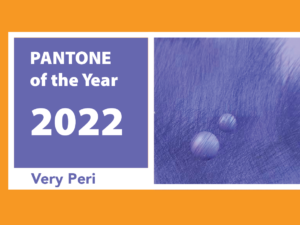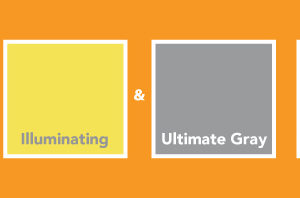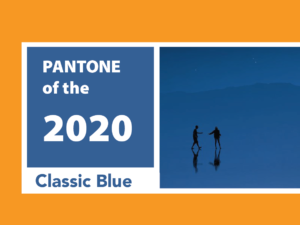
You have your brand concept. You have the brands’ name. It is time to start thinking about logos and colors. Knowing what colors to choose for your brand is very important. Why? Well, color influences more than you would think.
As reported by Canva by Sarah Marshall.
Color meaning and symbolism: How to use the power of color
Color holds power. It can impact our moods, emotions, and behaviors. It can also be a source of information. While an individual’s response to color can stem from personal experience, the science of color along with color psychology supports the idea there’s far more to it.
Countless studies have been conducted on the relationship between color, particularly in the areas of marketing and branding.
Here are some of the findings:
- Color influences 85% of shoppers’ purchase decisions.
- About 62-90%of the product assessment is based on colors alone.
- Colors increase brand awareness by 80%.
At a basic level, colors influence how consumers view the ‘personality’ of the brand in question, so it’s important you get it right. In the following article, we’ll show you how to use the power of color in your branding by breaking down color meaning so you can choose the colors that are right for your product or business.
Brand color and logos
A brand’s logo and visual identity will comprise a number of visual cues, such as shapes, symbols, numbers, and words. But the number one visual component that people remember most is color.
When it comes to branding, the power of color is both emotional and practical. On an emotional level, color can affect how consumers feel when they look at a brand, while on a practical level it can help a brand stand out in the crowd.
Whether you’re a designer or a business owner, it’s helpful to know color meanings and symbolism so you can make informed decisions. If you choose a color meaning ‘tranquility’ for your extreme sports brand, you might be sending the wrong message.
So, let’s look at how to choose the right color for your brand.
Branding palette: Warm, Cool and Neutral
Before we get into specific colors, let’s look at the three categories that define color: Warm, cool, and neutral, with each group conveying a different feeling.
Warm colors
This includes red, yellow and orange, and variations like pink. These colors evoke warmth due to their brightness and link to the sun. In general, they convey optimism, enthusiasm, and passion.
Cool colors
These include green, blue, purple, and their variations like violet. These colors are considered cool as they are colors commonly found in nature and are known for their calming effect. These colors are calming, relaxing, and subdued.
Neutral colors
These include brown, black and white, as well as variations like gray. They’re often paired with warm or cool colors but are sophisticated on their own. They can be powerful and pure and are sometimes referred to as the earth tones.
Now you understand the color categories, let’s get into specific colors.
1. Red
Red is a color of intense emotions, ranging from anger, sacrifice, danger, and heat, through to passion, and sexuality. Used in branding, it can deliver an impactful punch with the ability to increase desire. Not surprising when it’s the color of fire and blood, as well as being associated with love. It is a bold, energetic, and lively color that can symbolize strength, confidence, and power.
Tips for use: In many Asian countries such as India and China, red is regarded as the color of happiness, wellbeing, and good fortune, so always consider the context.
2. Pink
Pink is regarded widely in the western world as the color of femininity. Because of this, it is used to bring awareness to breast cancer and women’s products. However, like all colors, pink is quite diverse, and the level of intensity can impact its meaning. Pale pink is often aimed at little girls, dusty pink is more sentimental or romantic, while hot pink indicates youthfulness.
Tips for use: Identify the mood and feeling you want to muster and choose your pink accordingly. Don’t shy away from using pink for genderless brands (like T-Mobile does) as you may be targeting personality or gen-Y rather than gender.
3. Orange
Blending the warmth of red and the optimism of yellow, orange communicates activity and energy. And of course, it’s hard not to associate it with its namesake, immediately making it feel fresh and healthy.
Orange has different tones and shades, each with different meanings and effects. For example, light pastel peach tones are seen as sweet, conversational, and affable, whereas more intense, vibrant oranges are seen as representative of vitality, energy, and encouragement.
Tips for use: Because orange is associated with fun and vibrancy is well suited to youthful, energetic brands and best avoided for luxury, traditional or serious brands.
4. Yellow
Being the color of sunshine, yellow puts a smile on the dial. It is the most visible color from a distance (which is why it’s used for street signs) and communicates cheerfulness, friendliness, joy, and energy. It can also be associated with mental clarity and intellect. However, yellow is also a cautionary color used in life vests, police cordoning tape, and hazardous areas.
Tips for use: Some shades of yellow can look cheap—although this may suit your brand image. So yellow is a great example of when to research consumer reaction to color appropriateness and make sure it is the right color for your product.
5. Green
Named after the Anglo-Saxon word grene meaning “grass” and “grow” but today it has two common associations that are paradoxical. One being nature and the environment, and the other being finance and wealth. When it comes to nature, green represents plant life and growth and is consequently used to convey being ‘green’ in the environmental, sustainable, organic, natural sense of the word. And of course, green is, as the saying goes, ‘the color of money’ (US money, that is) and therefore associated with wealth and stability.
Tips for use: Pick your shade of green carefully as brighter, lighter greens indicate growth, vitality, and renewal; while darker, richer greens represent prestige, wealth, and abundance.
6. Blue
Blue is a color that has long been associated with royalty, art, military, business, and nature, making it a color with a lot of applications. It is a favorite color for companies that wish to convey reliability, trustworthiness, and communication (think Facebook, Twitter, and Samsung) and for expressing the authority of organizations like the police.
It is also appreciated for its calming and harmonious qualities being associated with the sea and sky. On the flip side, it’s also used to express sadness or depression, or as we say, feeling ‘blue’.
Tips for use: Blue runs the gamut from corporate and dependable, to calming and tranquil, to feeling down in the dumps. So, choose your shade wisely.
7. Purple
Purple is considered a low arousal color. It is traditionally associated with royalty, majesty, or nobility as well as having a spiritual or mysterious quality. Darker shades often represent luxury or opulence while lighter lavender shades are quite feminine, sentimental, and even nostalgic.
Tips for use: Purple is best used for targeting a female audience as research suggests women list purple as a top-tier color while it doesn’t even rank for men. Overall, purple is not a common color for branding and in fact, Cadbury is the only purple brand in the Forbes list of the 100 most valuable brands from 2014.
8. Brown
Brown gets a lot of use in this era of organic and natural food, beauty, and products. Nature-inspired it represents a feeling of wholesomeness, orderliness, and being grounded. It is simple, strong, durable, and honest and may express that your brand has better things to care about than superfluous color when really, there are so many beautiful shades of brown to elevate any product.
Tips for use: Use caution with brown as it can remind people of dirt. On the other hand, it’s also great to cover up dirt if the product you’re branding has anything to do with soil, dirt, or mud.
9. White
White represents simplicity, purity, innocence, and perfection. And if you had to identify one brand that has used white to convey its brand message to perfection it would have to be Apple – white represents the simplicity of the products in both their form and function. White also comes with a starkness or sterility about it, which is often used by designers to convey a minimalist aesthetic and clean, modern quality.
Tips for use: It’s difficult to inject personality into your brand when using white, so make sure your brand is about simplicity, purity, and transparency.
10. Black
Black is to be taken seriously. It represents power, luxury, sophistication, and exclusivity on one hand; and death, evil, and mystery on the other. From formality to mourning to power, black is bold, classic, and not to be fooled with. While color is more likely to increase brand recognition there’s no reason black—when used appropriately—can’t be just as distinctive, memorable, and communicative of a brand’s attributes.
Tips for use: Contrast a bright color against black; use gold foil for a touch of luxe, or combine it with white for a bold and simple statement. Think about texture and how matte or glossy black might change the message of your brand.
11. Multicolor
Of course, what about mixing multiple colors in one logo, such as Google, the Olympics, and NBC? Diverse color generally indicates variety – be it representative of people, countries, or offerings.
Tips for use: Mo’ colors equals mo’ money when it comes to printing so consider your budget (although this won’t matter if you’re dealing online only). Pay attention to how your choice of colors work together both printed and digitally as the end result may vary with different screens and different printers.
Color theory summary
Here’s a quick summary of the colors and their meaning.
Red – danger, passion, excitement, energy
Pink – feminine, sentimental, romantic, exciting
Orange – fresh, youthful, creative, adventurous
Yellow – optimistic, cheerful, playful, happy
Green – natural, vitality, prestige, wealth
Blue – communicative, trustworthy, calming, depressed
Purple – royalty, majesty, spiritual, mysterious
Brown – organic, wholesome, simple, honest
White – purity, simplicity, innocence, minimalism
Black – sophisticated, formal, luxurious, sorrowful
Multicolor – United, open, diversity
Now, that you know the meaning behind all the colors. It is time to choose a few for your brand. What colors are you thinking about choosing?
Additional Color Resources
How Color Impacts Logos and Branding




